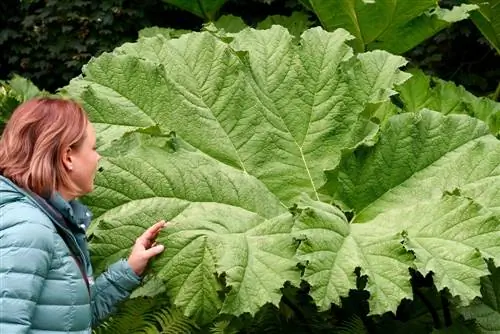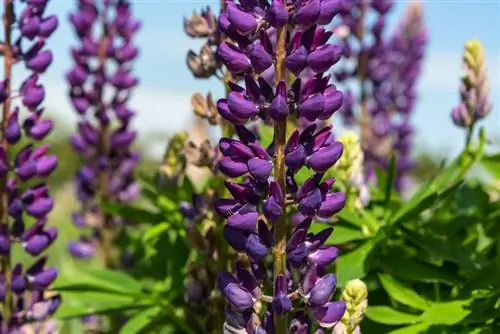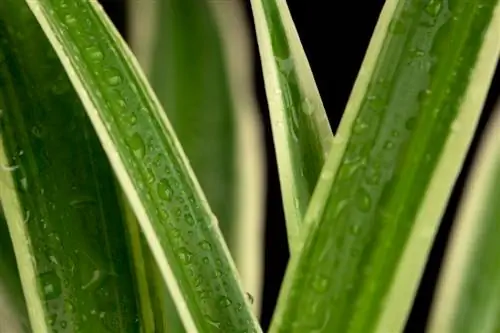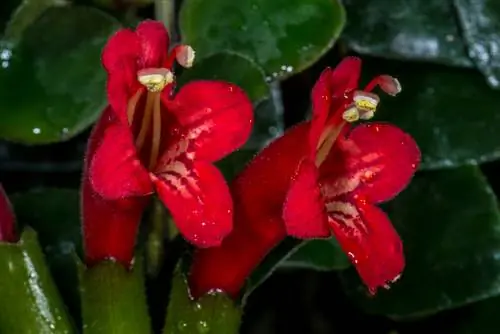- Author admin [email protected].
- Public 2023-12-16 16:46.
- Last modified 2025-01-23 11:22.
The mammoth leaf is extremely decorative and is very similar to rhubarb. Unlike this one, it is not exactly suitable as food. However, in Chile the stems of some varieties are said to be peeled and eaten.

Is the mammoth leaf poisonous?
The mammoth leaf is probably not poisonous to humans, but its small red fruits are not edible. The plant is non-toxic to animals such as voles and snails, so there is no danger to pets.
Is the mammoth leaf dangerous for animals?
Since the mammoth leaf is often eaten by voles and snails, it cannot be poisonous to these animal species. It is probably non-toxic to other animals and therefore does not cause any harm. So you don't have to worry about your cat or dog.
Are the fruits of the mammoth leaf edible?
The mammoth leaf produces numerous red, spherical fruits in autumn. They are very small, about 2.5 millimeters in diameter, and should not be consumed. The seeds from these fruits are only suitable to a limited extent for propagation because they do not germinate very reliably and practically no longer germinate when dried.
How can I use the Mammoth Leaf?
In principle, the only benefit of the mammoth leaf is its beauty. The decorative leafy perennial grows very quickly and thrives well in partial shade. With good care, it reaches a size of a good two meters, both in height and width. You can also use it to decorate corners in your garden where other plants don't feel so comfortable.
The most important things in brief:
- probably not poisonous to humans, fruit not edible
- tasty for voles and snails
- the stem of Chilean species can be peeled and eaten, similar to rhubarb
- not related to rhubarb despite great similarity
- Seeds only germinate freshly and not very reliably
- greatest benefit: decoration in partial shade
Tip
If you prefer to enjoy the sight of the mammoth leaf instead of the plant itself, you will get the most out of this decorative and impressive leafy perennial.






